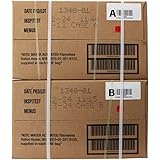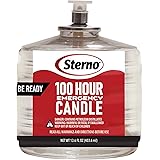Maximizing Your Space
Utilize Vertical Space
One of the biggest challenges in small homes is space, of course! To tackle this, I found that utilizing vertical space is a game changer. Think about it: shelves, hooks, and hanging organizers can help you take advantage of that wall real estate you often overlook. This simple shift can turn a cramped corner into a functional storage area.
Another great way to utilize vertical space is by installing tall cabinets or bookcases that reach up to the ceiling. This not only makes great use of the height but also draws the eye upward, creating an illusion of more room. Plus, it keeps your essentials organized and out of sight!
Don’t forget to rethink your furniture, too. Look for pieces that offer dual functionality—like ottomans with hidden compartments or beds with built-in drawers. Every inch counts, and these little changes can make a big difference!
Prioritizing Essential Supplies
Assess Your Needs
When prepping in a small space, it’s crucial to prioritize your essential supplies. I often start by assessing what I absolutely need versus what I want. You’d be surprised how quickly the want list can grow. Be ruthless! Stick with items that will genuinely help you in an emergency.
Next, it’s all about categorizing. I like to divide supplies into food, water, medical, and tools. Each category should have specific items that are most beneficial for my family’s unique situation. You might need a different set than I do, so keep that in mind!
Finally, consider the shelf life of supplies. You want to stock up on non-perishables that can last for a while. Canned goods and dried foods are great staples, and they don’t take much space, either. Don’t forget to rotate your supplies regularly so that nothing goes to waste!
Cooking Solutions for Small Kitchens
Smart Cooking Gear
When it comes to cooking in a small kitchen, I’ve learned that having the right gear is essential. Invest in multi-purpose appliances. A slow cooker that doubles as a pressure cooker? Yes, please! It saves space and simplifies meal prep.
Also, think about your cooking techniques. You might want to explore one-pot meals or sheet pan dinners. Not only do these save on cleanup, but they also help you use all the ingredients you have on hand. My go-to recipes often come from a cabinet clean-out!
== > What if ... Get a FREE Subscription to PREPARE
Don’t forget to declutter your kitchen regularly. It’s easy to accumulate gadgets you never use. Every few months, I go through my kitchen drawers and get rid of tools that have lost their usefulness to make room for the essentials.
Communicating with Loved Ones
Creating a Family Plan
In any prepping situation, communication is key, especially in a small home. My first step was to gather everyone in the household and create a family preparedness plan. Everyone plays a role, and knowing who is responsible for what brings peace of mind.
Get Preparedness and Self-Reliance Tips. Subscribe Now!
We’ve set up a system where we regularly review the plan and practice it together. This not only reinforces our preparedness but also helps in ensuring that everyone knows where supplies are stored and can access them in case of emergencies.
Lastly, I encourage creating a group chat. It’s an easy way to communicate essential information quickly. Whether it’s a reminder to pick up supplies or a heads-up about an approaching storm, keeping everyone in the loop is invaluable!
Staying Informed and Connected
Researching Local Resources
Staying informed is vital, particularly in today’s world. I make it a habit to research local resources—everything from emergency services to community preparedness groups. Knowing what’s available around me can help make tough times a bit easier.
Join local community groups, both online and offline. I’ve found that networking with neighbors has resulted in sharing helpful tips and resources. Plus, you might discover local food banks or shelters you didn’t know existed, which can be essential during crises.
And keep up with local news! I subscribe to alerts from city services that provide information on emergencies, weather-related issues, and local events. Knowledge is truly power, and being well-informed can make a world of difference.
FAQ
1. How can I start prepping in a small home?
Start by assessing your space and needs, then build a list of essential supplies. Utilize vertical storage, prioritize multi-purpose items, and create a family emergency plan.
2. What types of supplies should I prioritize?
Focus on water, non-perishable food, a basic first aid kit, and tools that can assist in emergencies or daily living. Tailor these to your family’s unique needs.
3. How can I make cooking easier with limited space?
Invest in multi-functional cooking gadgets, opt for one-pot meals, and declutter your kitchen regularly to keep only the essentials at hand.
4. What’s the best way to communicate a preparedness plan to my family?
Gather everyone for a family meeting where you can create and discuss the plan. Regular reviews and practice drills are also crucial for everyone to understand their roles.
5. How can I stay informed in emergencies?
Research local resources, join community groups, subscribe to local alerts, and keep an eye on news updates. Being proactive helps you stay ahead in any situation.






